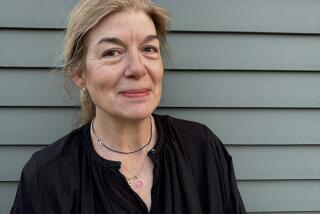A Tribute to Troubadours’ Language of Love
- Share via
THE MAYS OF VENTADORN
By W.S. Merwin
National Geographic Directions
166 pages, $20
*
The word “Provence” is laden with mystique. In culinary terms, the word conjures up fare made with robust mixtures of olive oil, capers, garlic and lamb, and writers like M.F.K. Fisher and Peter Mayle have taken any number of armchair travelers on gastronomic tours of this picturesque region in the south of France.
But there is another aspect to the south of France, often overlooked, yet just as tied to the tastes of the tongue: an archaic, extraordinary language in which medieval troubadours sang their songs of love. The language is all but extinct, and if one could hear it spoken today, it might sound as alien as Chaucer’s English does to modern ears.
Extinct though it may be, the language and poetry of Provence and the surrounding lands have mingled, like a scent of wild dill, with the life of W.S. Merwin, one of the finest lyrical poets writing today.
In “The Mays of Ventadorn,” Merwin pays lavish tribute to the 12th century troubadours and the regions that have meant so much to him during his career, starting with that day in the 1950s when he visited the poet Ezra Pound.
” ... [A]t your age you don’t have anything to write about. You may think you do, but you don’t,” Pound told the 19-year-old Merwin at St. Elizabeth’s Hospital in Washington, D.C., where Pound was confined after World War II. “So get to work translating .... Try to learn the Provencal, at least some of it, if you can .... Get as close to the original as you can. It will make you use your English and find out what you can do with it.”
Another poet who inspired Merwin was Dante, whose homage to the troubadours in the 26th canto of “Purgatorio” made Merwin “want to try again to hear something of the troubadours’ brief, bright sense of the world.”
Anyone who knows Merwin’s poetry or his memoir, “The Lost Upland,” knows how intimate he is with the world of nature, how he places himself in sensuous and direct contact with it.
And so, with the words of Pound and Dante in his ears, the young Merwin traveled, maps in hand, to the region known as the Quercy, talking to villagers and combing the countryside for ruins and old farmhouses. It became “a continuing treasure hunt, finding them, trying to learn something of their current status .... But I could scarcely imagine having one of them and living in it.”
Soon, however, he became the owner of a farmhouse “half-buried in brambles”--thanks to a small inheritance left by a great-aunt. Over the years, it becomes a refuge, a haven from the rest of the world, even as that world encroached on the Quercy in the forms of modernization and tourism.
The “brief, bright” world of the troubadours, as Merwin comes to understand it, exuded a force that appeals still today. They were the rock stars of feudal courts; in song they bared their souls to swooning duchesses betrothed to kings. Isolated from their loves, they were defiant, roguish, yet mournful, and seething with desire.
Their poetry blended eroticism with coded references to court gossip and the hawthorn, also known as the mayflower or mays, which the troubadours used as a symbol of love before the rose took its place. “The way this love of ours goes on,” writes the supreme troubadour Bernart de Ventadorn, whom Merwin deeply admires, “is like the branch of the hawthorn/that keeps trembling upon the tree .... “
Merwin traces Bernart’s elusive life, hunting for the truths among the legends, speculating on his long romance with Eleanor of Aquitaine, who would marry the French King Louis VII and then the cruel Henry II of England. It is perhaps about her, Merwin suggests, that Bernart wrote:
Oh what is my life to me
Unless every day I see
My own true joy
In bed or from the window
Even in translation, one sees the simple clarity that Merwin admires. And, as he also points out, the mixture of “sensuality and sublimation” one finds here, and elsewhere in troubadour poetry, is perhaps what led to its demise, discouraged and smothered by the Inquisition as well as by continuing turmoil among the warring nobles.
Merwin’s prose is vivid and spare, like his poetry, and his method of plunging into the life of Bernart ripples outward like a stone tossed in a pond, touching on larger historical and social contexts. He moves easily among the stories of Bernart and his unfulfilled longings; those of romantic figures like Richard the Lion-Hearted; childhood memories of his own stern father who was an Army chaplain; and the pastoral way of life that he knew was ending with the deaths of old friends in his village.
“The Mays of Ventadorn” is elegiac, written by the light of a setting sun. Though only fragments remain to give us a glimpse of the troubadours’ world, Merwin makes us grateful that we have them.
More to Read
Sign up for The Wild
We’ll help you find the best places to hike, bike and run, as well as the perfect silent spots for meditation and yoga.
You may occasionally receive promotional content from the Los Angeles Times.






